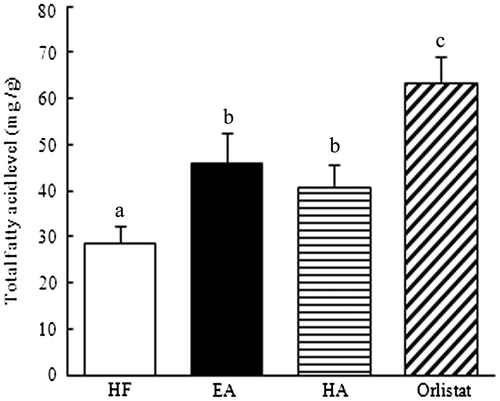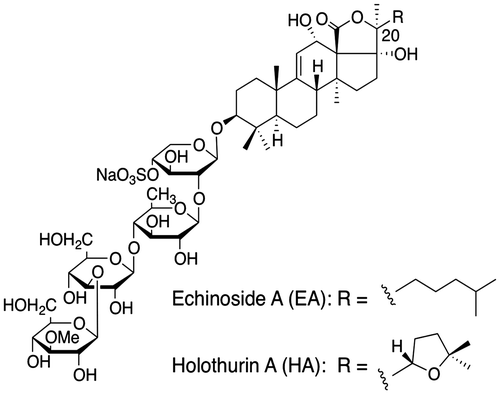Figures & data
Fig. 2. Chromatogram of echinoside A (EA, upper plot) and holothurin A (HA, lower plot) isolated from P. graeffei.
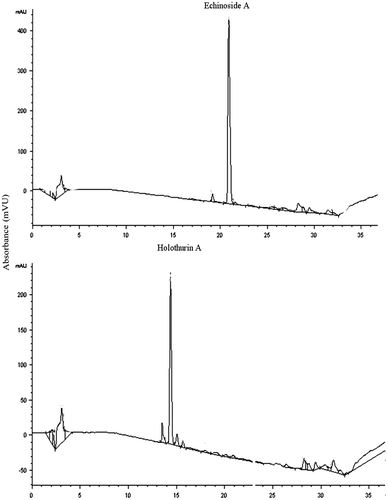
Table 1. Compositions of the experimental diets (g/kg of diet).
Fig. 3. Inhibition of porcine pancreatic lipase activity by EA, HA, orlistat, and crude saponin.
Note: (A) inhibition of lipase by EA or HA. Values are the mean ± standard error, n = 3. (B) Inhibition of lipase by EA and orlistat. Values are the mean ± standard error, n = 3. (C) Double-reciprocal plot of the reaction rate vs. triolein concentration in the presence of the crude saponin.
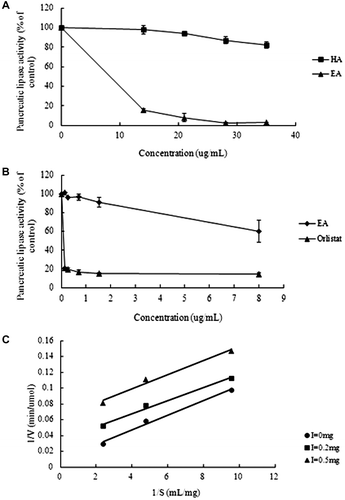
Fig. 4. Predicted binding model of EA complexed with porcine pancreatic lipase.
Note: The protein structure is shown by a ribbon representation of the solvent-accessible surface. EA is shown by a stick representation.
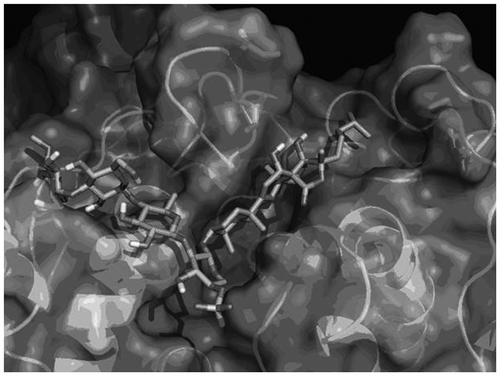
Fig. 5. Effects of EA and HA on rat plasma triglyceride levels after the oral administration of a lipid emulsion.
Note: Each rat was given 2 mL of a lipid emulsion in the presence or absence of the saponins. Results are presented as the mean ± standard error of 6 rats. Those not sharing a letter differ, p < 0.05 (one-way ANOVA, followed by Duncan’s multiple range test).
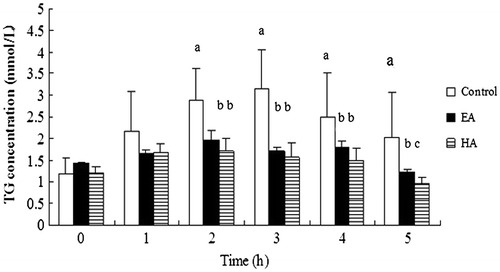
Table 2. Effect of EA, HA, and orlistat on the body weight, food intake, and liver weight of mice.
Fig. 6. Effects of EA, HA, and orlistat on the adipose tissue weight in mice.
Note: (A) effects of EA, HA, and orlistat on the perirenal adipose tissue weight in mice. (B) effects of EA, HA, and orlistat on the epididymal adipose tissue weight in mice. Data are presented as the mean ± standard error of the mean of 7 rats. Those not sharing a letter differ, p < 0.05 (one-way ANOVA, Duncan’s multiple range test).
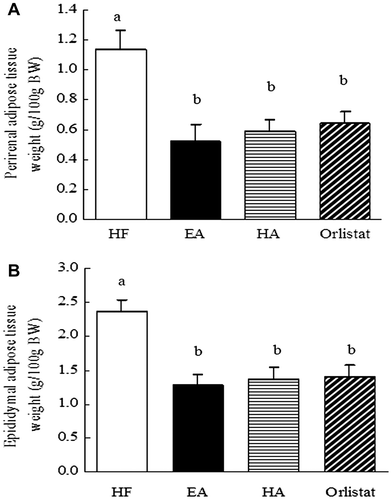
Fig. 7. Effects of EA, HA, and orlistat on fatty acid excretion in the feces of mice.
Note: C57/BL6 mice were fed a high-fat diet with or without sea cucumber for 6 weeks. Feces were collected for three consecutive days and freeze-dried. Data are given as the mean ± standard error of the mean of 7 rats. Those not sharing a letter differ, p < 0.05 (one-way ANOVA, followed by Duncan’s multiple range test).
